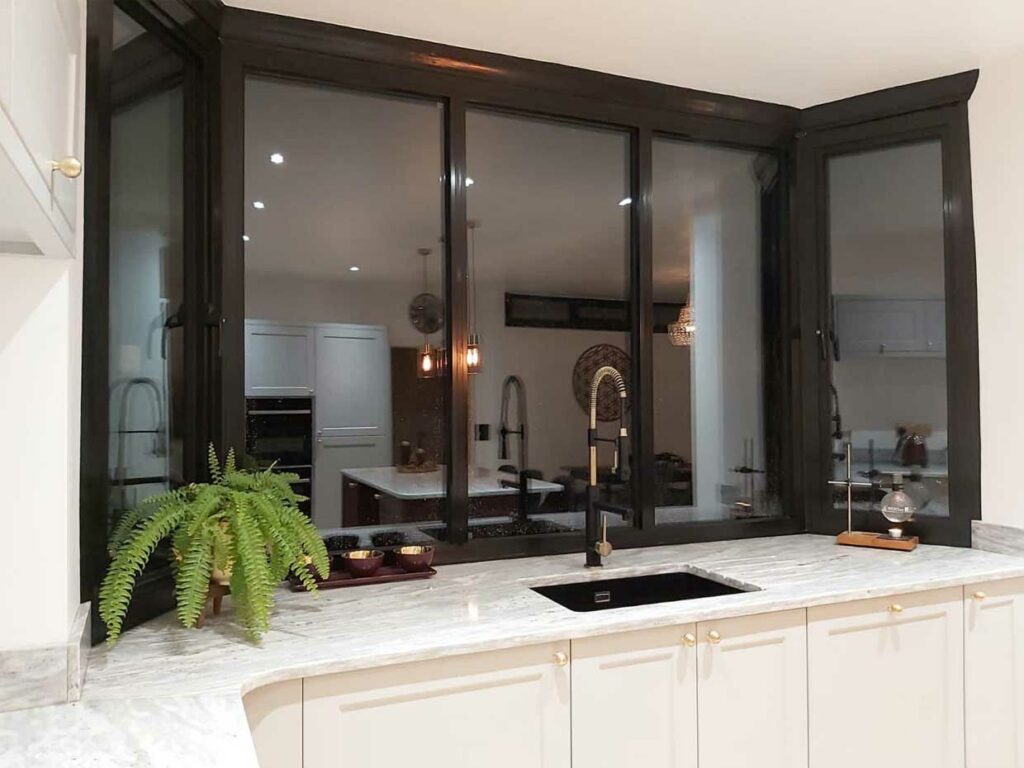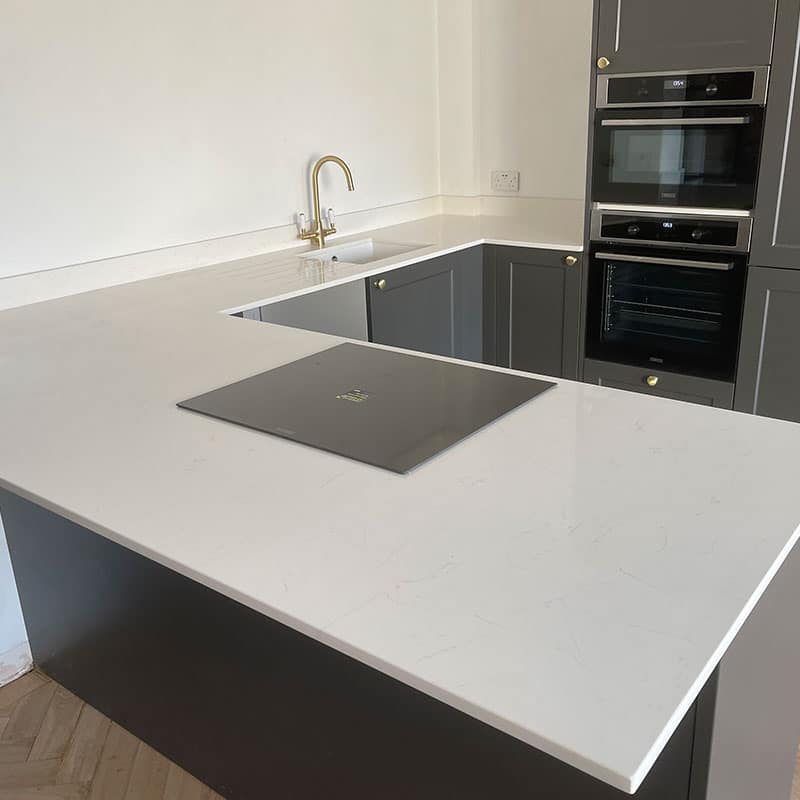The Possible Problems When Installing A Tap Behind The Sink
Although it’s not uncommon to see a tap located at one corner of an undermounted sink, most customers prefer to have their taps installed directly behind the sink, especially when a single mixer tap serves two bowls. However, when it comes to solid stone worktops, there are three problems that affect the placement of taps:
Firstly, the narrow strip of stone at the back of a large undermount sink is already a weak point in a big run. If a tap hole is drilled in it, it becomes weaker. This issue is addressed in the general standards for worktops, which provide information on clearances to help address this problem.
Secondly, there may be difficulty in plumbing the tap when the gap between the sink and the wall or carcass is very tight. In such cases, there may be no room to tighten or loosen the tap once it is in position, which requires prior discussion with the plumber and templaters/fitters.
Thirdly, the clearance at the back of a lever tap is a particular issue. This is the focus of the article. It’s possible to install a worktop safely and have the tap plumbed in, only to find out that the tap cannot be turned on properly. This problem only applies to lever taps that require a backward throw, but it can be very frustrating if it’s not spotted beforehand.

Follow some simple guidelines
Our general guidelines for determining if a sink will fit are as follows:
- Allow for 90mm from the front of the worktop to the front inside edge of the bowl, or 50mm from the front of the carcass to the inside edge of the bowl.
- Ensure that the tap is centered at least 30mm from the back of the sink frame.
- Take into account the depth of the tap when its levers are fully back.
- Consider the space required for any wall coverings or windowsills, keeping in mind that upstands are typically 20mm thick.
- Based on these measurements, determine how far the carcass should be pulled off the wall.
Rowe Granite Taps – Rowe Granite Quartz and Granite Kitchen Worktops
If you’re looking for the best possible option for your kitchen, solid stone worktops are the ideal choice.
Not only do granite and quartz worktops offer an attractive and durable surface, but they can also add value to your home. Granite is exceptionally hard and can only be cut with diamonds, while its dense grain makes it resistant to stains.
Additionally, the variety of natural stones available from quarries around the world is vast and unique, as no two quarries produce the same type of stone. With a wide range of colors and styles available in man-made quartz, the design possibilities are endless. Regardless of the style of your kitchen, there is a stone worktop that can perfectly match your needs and preferences.

Quartz Worktops Norfolk – Granite Worktops Hull – Quartz Worktops Cheshire
